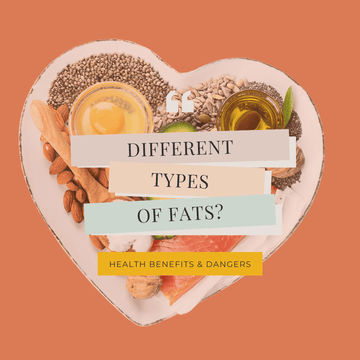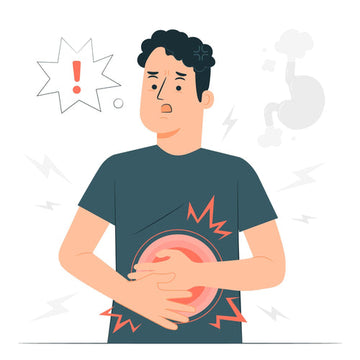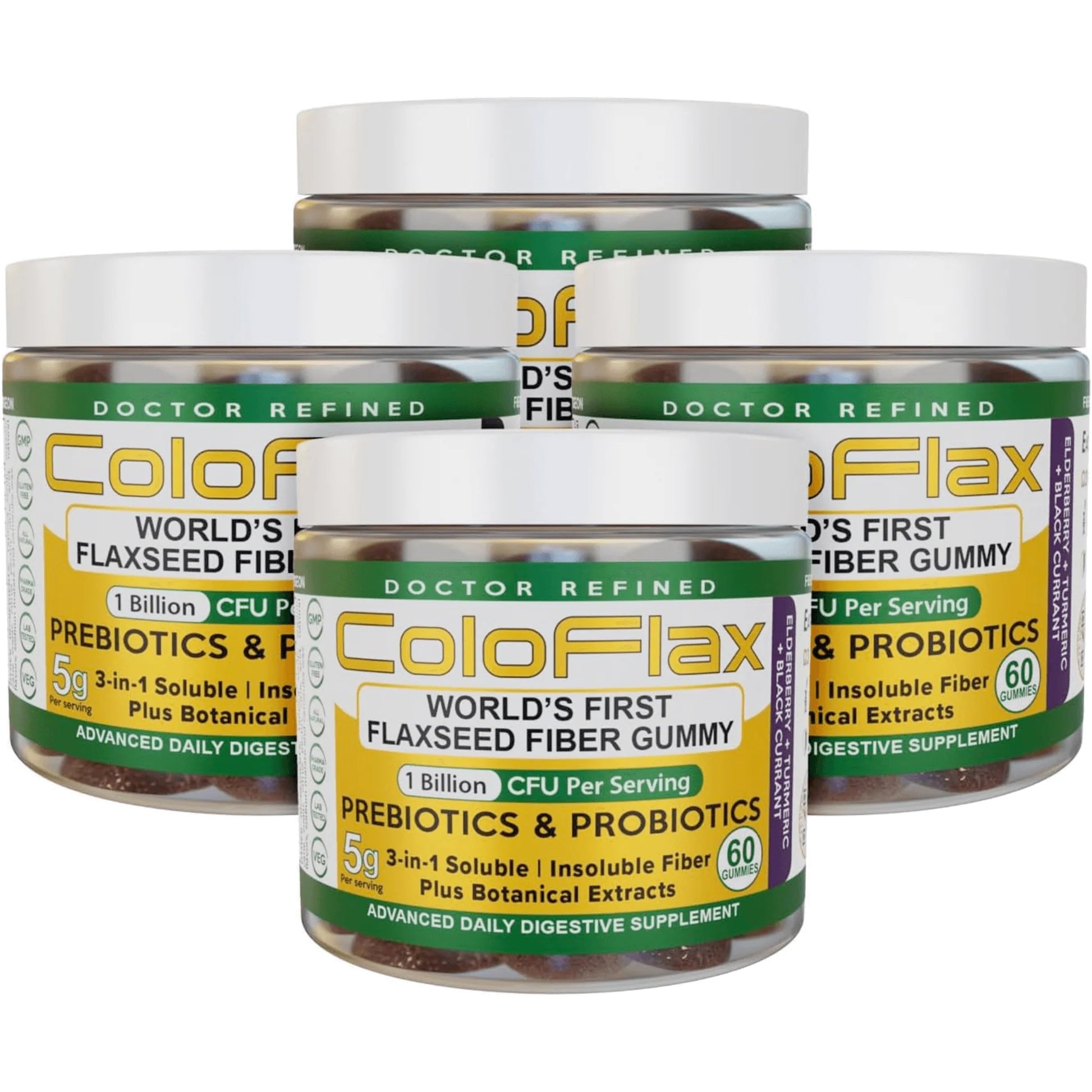Fat was once vilified, with many experts recommending a low-fat diet and triggering an influx of fat-free products as a result. These days, it’s recognized as the essential macronutrient that it is, and we know that fat plays an important role in cardiovascular health.
It’s all about the type of fat that you eat, as well as how much of it you eat.
But it’s easy to get confused by words like saturated, polyunsaturated, and monounsaturated, and then you have trans fats complicating things even further. What is the difference between all of these fats, which ones should you avoid, which ones should you eat more of, and how do they work?
Let’s find out!
What is Saturated Fat?

Saturated fats are often solid at room temperature and typically come from animal products, including red meat, poultry, and dairy. They are also found in palm oil and coconut milk.
If we’re talking about good fats vs bad fats, saturated fat definitely fits the former category. However, they are not as bad as trans fats (see below) and a little saturated fat won’t kill you. In fact, your body uses saturated fat for key bodily functions.
The trick is to keep your consumption low and make sure saturated fat does not form a significant part of your diet.
So, 10 to 15 grams per day is fine, but as soon as you start hitting 30 grams or more, you could be greatly increasing your risk of adverse health effects.
Where Can You Find Saturated Fat?
- Butter
- Cheese
- Beef
- Pork
- Chicken
- Lard
- Palm oil
- Coconut oil
- Cream
- Whole milk
- Ice cream
You can avoid these fats by sticking with lean meats, choosing chicken without the skin, and drinking skimmed milk. You should also avoid fried foods.
To give you an idea of how much fat is in everyday foods, a McDonald’s Big Mac and Large Fries contains 11.5g of saturated fat, putting you around your recommended daily intake. A large Greek salad followed by a naturally low-fat yogurt and several servings of fruit will give you around 1g.
Needless to say, even if you don’t know what saturated fat is or understand how it works, you should have a good idea of which foods to eat and which ones to avoid.
What are the Effects of Saturated Fat?
A high intake of saturated is associated with an 18% increased risk of coronary heart disease. Notably, researchers have found that switching just small amounts of saturated fat for unsaturated fat can greatly reduce this risk, giving you an idea of how just damaging it is in large quantities.(1)
Saturated fat causes cholesterol to build up in your arteries, restricting the flow of blood and increasing the likelihood of heart attacks and strokes. As with other types of fat, it contains around 9 calories per gram, making it very calorific. An excessive amount, therefore, can also cause weight gain, and when combined with a build-up of cholesterol, this increases the risk of heart disease even further.
What is Trans Fat?

There are two types of trans fats: artificial and naturally occurring. The latter is found in the guts of some animals and in certain dairy and meat products. The former is created via a process that combines hydrogen and vegetable oils.
Artificial trans fats are a major dietary concern. They have been linked with a variety of health issues and there have been major regulatory drives to reduce them, including in Switzerland, Canada, Denmark, and in parts of the US (such as California) where they are banned outright or heavily restricted.
Where Can You Find Trans Fat?
- Cakes
- Pie crusts
- Frozen pizza
- Stick margarine
- Cookies
- Fried foods
Look for terms like “partially hydrogenated oils” on food labels to spot these fats and try to avoid them where possible. Bear in mind that regulations allow products to define themselves as having no trans fats if they contain up to 0.5g, so that claim isn’t always reliable.(2)
There are also foods out there that you might not realize contain trans fats. Shortening is one of the more obvious ones, but it means that everything with shortening has trans fats, including commercially baked foods.
Non-dairy coffee creamer can contain trans fats too, as can microwave popcorn.
What are the Effects of Trans Fats?
Trans fats increase the levels of bad cholesterol and reduce the levels of good cholesterol, creating a dangerous imbalance that could greatly increase the risk of coronary heart disease. There are many other potential issues as well, and it makes for alarming reading.(3)
To avoid these issues, keep your trans fat consumption to an absolute minimum. If you’re not the sort of person to check labels in the supermarket, just try to avoid processed foods, fast food, and anything that uses shortening and has been commercially prepared.
Trans fats are not poison. A little here and there won’t kill you. But there are no benefits to consuming this type of fat and if you do so on a regular basis, you may increase your risk of heart attack and stroke.
What is Polyunsaturated Fat?

On a molecular level, polyunsaturated fats have more than one unsaturated carbon bond, which is where the name comes from (“poly” from the Greek meaning “many”). These fats are solid when chilled and liquid at room temperature and they include sunflower oil, flaxseeds, and corn oil.
Where Can You Find Polyunsaturated Fat?
- Flaxseeds and flaxseed oil
- Sunflower seeds and sunflower seed oil
- Corn oil
- Fatty fish
- Safflower oil
- Soybean oil
- Walnuts
Polyunsaturated fat is one of the things that makes flaxseeds so beneficial, as noted in our guide to flax, hemp, and chia. It’s not the only thing though, as these seeds (along with flaxseed oil) also contain a spectrum of minerals.
It’s also a category that includes omega-3 and omega-6 fatty acids, a type of fat that has been linked to many health benefits and one that you have no doubt encountered in the past.
What are the Effects of Polyunsaturated Fat?
Polyunsaturated fats have a number of effects on the body and can support heart health when consumed in sufficient quantities. Research has found that replacing saturated fat with omega-3 and omega-6 fatty acids could reduce coronary events by up to 24%. (4)(5)
It’s worth noting, however, that some experts dispute the benefits of omega-6 fatty acids and argue instead for lower omega-6 consumption and higher omega-3 consumption. It’s all about finding a balance between the two.
What is Monounsaturated Fat?

“Mono” comes from the Greek meaning “only” and they get that name because the molecules have a single unsaturated carbon bond. Monounsaturated fats are often solid when chilled and liquid at room temperature, just like polyunsaturated fats.
Olive oil is one of the best sources of monounsaturated fat. This oil contains around 73% monounsaturated fat, with 14% saturated and 11% polyunsaturated. Canola oil and peanut oil are good sources of monounsaturated fats as well.
Where Can You Find Monounsaturated Fat?
- Olive oil
- Canola oil
- Peanut butter
- Peanut oil
- Sesame oil
- Avocadoes
Monounsaturated fat is found in many plant-based oils, as well as seeds and nuts. As with saturated and polyunsaturated fat, it contains around 9 calories per gram, so it’s still high in calories and you’ll need to keep this in mind when adding more monounsaturated to your diet.
What are the Effects of Monounsaturated Fat?
Monounsaturated can reduce levels of bad cholesterol, thus improving arterial health and potentially lowering the risk of heart disease. They are also rich in vitamin E, a type of antioxidant vitamin often lacking in the American diet.
Vitamin E is a fat-soluble vitamin that scavengers free radicals that damage cells. It may also support reproductive health and help with skin and hair health.
Does Fat Help with Digestion?

Fat is digested slower than protein and carbohydrates. It is the last of the macronutrients to leave the stomach, after which they are gradually broken down into fatty acids and glycerol.
Fat won’t do much to help your digestive process, but it won’t necessarily harm it, either. Of course, if you’re eating nothing but butter and olive oil, then you’re going to have some problems and some very unpleasant bowel movements. But if you’re eating fat as part of a healthy, balanced diet, you should be okay.
Just remember to keep your fiber intake high and ensure you get a good blend of both soluble and insoluble fiber. If you need a little help in this regard, check out ColoFlax, our flaxseed fiber gummy.
In addition to a natural fiber blend, ColoFlax contains omega-3 fatty acids, probiotics, and antioxidants—all of which are important for a healthy digestive system.
What is the Daily Recommended Intake of Fat?
In previous decades, Americans were advised to reduce their fat intake, but the consensus has shifted and the 2020-2025 Dietary Guidelines don’t currently list an upper limit for fat.(6)
According to most experts, 5-6% of your total fat intake should come from saturated fat, constituting around 13g per day based on a 2,000-calorie diet. Trans fats are best avoided and unsaturated fats should constitute the majority of your fat intake.
The average diet contains around 30% of this macronutrient, which equates to 67g at 2,000 calories per day. It’s worth noting, however, that the Mediterranean diet typically usually goes much higher than this and the same is true for low-carb diets like keto.
Summary: The Four Different Fats
As you can see from this guide, fat is not evil, and rather than reducing your daily consumption, you should be thinking more about the types of fat you’re eating.
Fat is good…provided you’re eating the right kind.
Unsaturated fats are the way to go, which means eating more seeds, swapping lard and butter for olive oil, and avoiding fried foods.
These “healthy” fats constitute a large part of the Mediterranean diet, which is often regarded as one of the healthiest in the world. Monounsaturated is found in the olive oil that Greeks and Italians drizzle liberally over salads. Polyunsaturated fat is found in fatty fish that they eat two or three times a week.
And of course, these foods are consumed alongside a wide variety of fruits and vegetables, as well as minimal amounts of dairy. The result is a balanced diet loaded with fiber, lean proteins, and healthy fats.
At the other end of the scale, you have the “bad fats”. Trans fats and saturated fats are linked to an array of health complications and should be kept to a minimum. These fats are often consumed to excess in the United States while polyunsaturated fats tend to be ignored. That needs to change.
Many dieticians and health experts recommend switching saturated fat for polyunsaturated fat. So, keep this in mind, but remember to count those calories and consider your other macro and micronutrient needs.
References
- https://www.hsph.harvard.edu/news/press-releases/saturated-fats-increased-heart-disease-risk
- https://www.heart.org/en/healthy-living/healthy-eating/eat-smart/nutrition-basics/understanding-ingredients-on-food-labels
- https://www.ncbi.nlm.nih.gov/pmc/articles/PMC3551118/
- https://www.ncbi.nlm.nih.gov/pmc/articles/PMC2719153/
- https://www.health.harvard.edu/newsletter_article/no-need-to-avoid-healthy-omega-6-fats
- https://www.dietaryguidelines.gov/sites/default/files/2021-03/Dietary_Guidelines_for_Americans-2020-2025.pdf






